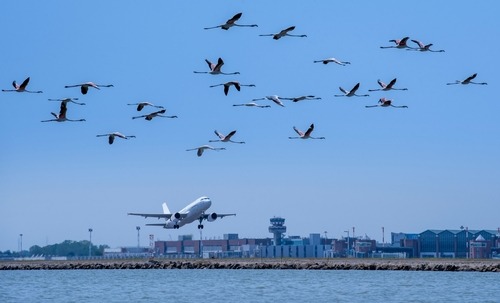
The North Carolina Department of Transportation’s Division of Aviation created a wildlife hazard mitigation program to reduce the risk of wildlife hazards at state airports by providing training and support.
The program, offered through a cooperative agreement with the U.S. Department of Agriculture’s Wildlife Services, provides direct management activities for airports experiencing wildlife hazards, assesses one-third of the state’s 72 public airports annually, and offers training on identifying common animal species, potential habitats, and food sources.
On average, birds and other wildlife strike aircraft in North Carolina airports once daily. Additionally, the Federal Aviation Administration Wildlife Strike Database tracks wildlife strikes and estimates that only one in five strikes are reported.
These strikes pose a threat to property and safety. An aircraft landing at a general aviation airport in 2018 sustained more than $800,000 in damages after hitting two white-tailed deer crossing the runway.
“These trainings are very important because they help the airports better understand the hazards on their airfields and what they can do to mitigate them, short-term and long-term,” Chris Willis, the program trainer and western district supervisor for the USDA Wildlife Services in North Carolina, said. “It also helps the Division of Aviation understand the needs the airport may have or what hazards exist.”
The next training session will be held at Rocky-Mount Wilson Regional Airport on May 18.